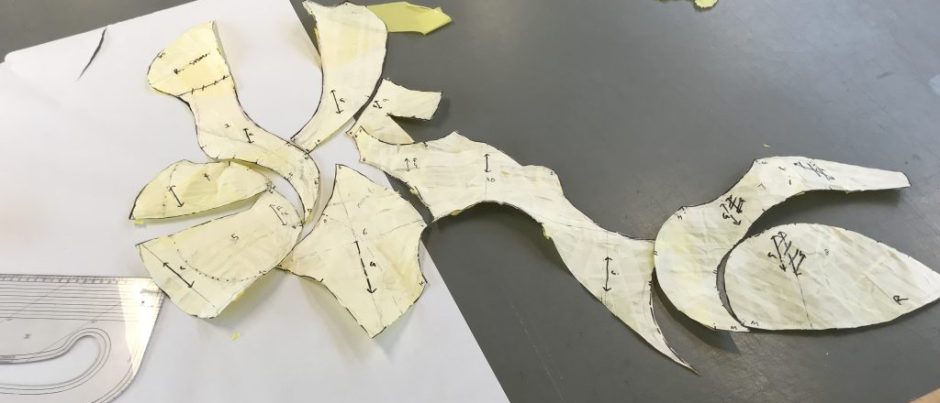Drawing on the literature I have read, and my own observations within the costume studio, I have drawn up some initial intervention ideas, which I will present to the interviewee and focus group. I will then develop one or two of these ideas, and collect data on them to reflect on, as part of the research cycle.
Accessible suppliers lists
Many of our students are not from London, so do not know where addresses are on our suppliers lists. Many students read English as a second language too, so this wordy text based may be hard to understand, and therefore a little off putting. My micro intervention idea is to produce a leaflet of sustainable suppliers (charity shops), that can be handed out. Alternatively, a wall poster could be made.
Below is a Miro board, which could provide an alternative, interactive way of sharing this information. However, I would like to also explore the idea of a leaflet version, with a map on one side and the list of places and addresses on the back, and see what my interviewees and focus group thinks.

Clothes swap and mending workshop
Many students seem not to want to come to the room at all, and often work from home. This idea is to help them overcome the barrier of the space being only a place for students to come to when they are experts in costume already. This thought process was in part instigated by passing, one academic tutor telling me that they think the students are intimidated by the space, and another occasion where a student told me that they felt the space was overwhelming. I wondered if this would not only invite students into the space who don’t normally feel they ‘belong’ here, but will also frame their introduction to it with environmentally sustainability.
The mending element would further consolidate the relationship to the space, as well as introducing some every basic mending skills. There is something very unique about the process of sitting and mending and chatting, that is commonly discussed in relation to craft and the community. However, this does somewhat contradict the association of craft as being inherently feminine, which in relation to costume can be detrimental to its values as a practice, and therefore (not) prioritised, respected, or funded. Although, there is something to be said for understanding how much time and skill something a simple as mending a moth hole can be.


Project planning assistance
Visual planning aids/help with this in the form of tutorials, visible prod schedules etc. Some of this is already on the wall, but I would like to investigate whether or not this would be useful for students going forwards. We have already tried to offer help in the form of tutorials, but this doesn’t always work. I have already instigated a production schedule display space in the costume studio, which seems to already be being made use of (see below images). When I have asked in passing, students have been very positive about this new addition to the space its easy to see and reference. However, I would like to apply this specifically to costume realisation processes, and/or create visual charts which model a variety of way of planning – as these ones do not suit everyone (myself included!).

If possible, I would like to also show some other visual ways of planning a process to the students in the focus group, and discuss whether they think seeing plans on the way, or being assisted in planning would be helpful.
Another option would be to show students other resources, such as those offered by the theatre green book such as this poster, or adapting the document linked to below:

https://theatregreenbook.com/wp-content/uploads/2024/02/Sustainability-Guidance-for-Costume-Designers-CPMs.pdf
However, I am open to other ideas that arise from the interviews and focus groups exploring these initial ideas!
